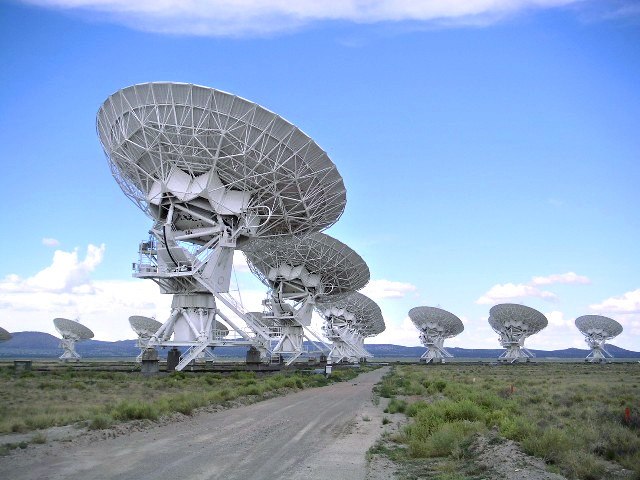The Very Long Baseline Array (VLBA) is a system of ten radio telescopes which are operated remotely from their Array Operations Center located in Socorro, New Mexico, as a part of the National Radio Astronomy Observatory (NRAO). These ten radio antennas work together as an array that forms the longest system in the world that uses very long baseline interferometry. The longest baseline available in this interferometer is about 8,611 kilometers (5,351 mi).
The eastern terminus of the VLBA, on Saint Croix, U.S. Virgin Islands
The VLBA telescope in Owens Valley, California
National Radio Astronomy Observatory
The National Radio Astronomy Observatory (NRAO) is a federally funded research and development center of the United States National Science Foundation operated under cooperative agreement by Associated Universities, Inc. for the purpose of radio astronomy. NRAO designs, builds, and operates its own high-sensitivity radio telescopes for use by scientists around the world.
National Radio Astronomy Observatory
The Very Large Array (VLA), an array of 27 dish antennas
On 12 May 2012, another Atacama Large Millimeter/submillimeter Array (ALMA) antenna was carried up to the 5,000-metre plateau of Chajnantor, bringing the total on the plateau to 33.
The 300-foot telescope after collapsing on November 15th, 1988





